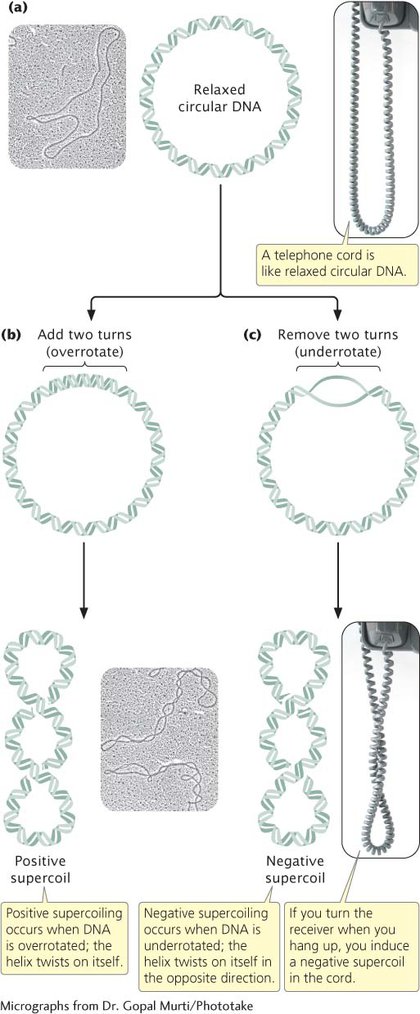Supercoiling
One type of DNA tertiary structure is supercoiling, which takes place when the DNA helix is subjected to strain by being overwound or underwound. B-

Supercoiling takes place when the strain of overrotating or underrotating cannot be compensated by the turning of the ends of the double helix, which is the case if the DNA is circular—
Supercoiling relies on topoisomerases, enzymes that add or remove rotations from the DNA helix by temporarily breaking the nucleotide strands, rotating the ends around each other, and then rejoining the broken ends. Thus, topoisomerases can both induce and relieve supercoiling, although not all topoisomerases do both.
Most DNA found in cells is negatively supercoiled. This state has two advantages over relaxed DNA. First, negative supercoiling makes the separation of the two strands of DNA easier during replication and transcription. Negatively supercoiled DNA is underrotated, so separation of the two strands during replication and transcription is more rapid and requires less energy. Second, the supercoiled DNA can be packed into a smaller space than can relaxed DNA.
CONCEPTS
Overrotation or underrotation of a DNA double helix places strain on the molecule, causing it to supercoil. Supercoiling is controlled by topoisomerase enzymes. Most cellular DNA is negatively supercoiled, which eases the separation of nucleotide strands during replication and transcription and allows the DNA to be packed into small spaces.
 CONCEPT CHECK 7
CONCEPT CHECK 7
A DNA molecule 300 bp long has 20 complete rotations. This DNA molecule is
positively supercoiled.
negatively supercoiled.
relaxed.
b